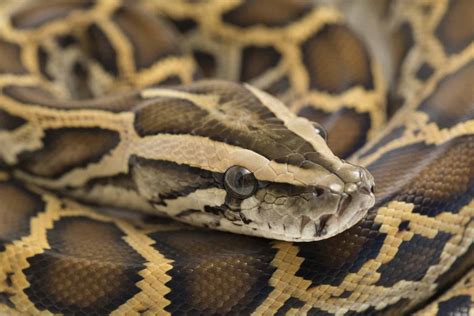
Red-headed Agama lizards, an invasive species rapidly spreading across Florida, are raising concerns among pet owners, particularly those with cats, prompting questions about their potential impact on the ecosystem and the health of domestic animals.
Florida residents are increasingly encountering the bright red-headed Agama lizard, an invasive species originating from sub-Saharan Africa. These reptiles, known for the males’ distinctive scarlet heads and orange bodies, have established a growing presence, leading to questions about their impact on local wildlife and potential risks to pets. Experts are now offering guidance on how to manage interactions with these lizards, especially if a pet, particularly a cat, catches one.
Invasive Agama Lizards Spread Across Florida
The Agama agama, or red-headed rock agama, is native to Africa but has found a suitable habitat in Florida’s warm climate. Their proliferation is causing concern among wildlife officials and residents alike. While these lizards are not considered inherently dangerous to humans or pets, their impact on the local ecosystem is a growing worry. They compete with native lizard species for resources and could potentially disrupt the ecological balance.
According to experts, the primary concern for pet owners is the potential for Salmonella exposure. These lizards, like many reptiles, can carry Salmonella bacteria, which can be transmitted to pets if they catch and consume the lizards. “If your cat catches one, the main concern is Salmonella,” states the Florida Fish and Wildlife Conservation Commission (FWC). Salmonella infection in pets can lead to symptoms such as vomiting, diarrhea, lethargy, and fever. In severe cases, it can even be life-threatening.
What to Do If Your Pet Catches an Agama Lizard
If your pet cat or dog catches a red-headed Agama lizard, immediate action is recommended. The first step is to carefully remove the lizard from your pet’s mouth, ensuring you do not get bitten in the process. Although the lizards are not venomous, their bite can be painful and could potentially transmit bacteria.
Following the removal of the lizard, thoroughly inspect your pet for any injuries, such as scratches or bites. Clean any wounds with mild soap and water. The next crucial step is to contact your veterinarian. “Contact your veterinarian immediately,” advises the FWC. Your vet can assess your pet’s risk of Salmonella exposure and recommend appropriate testing and treatment.
Salmonella Risk and Treatment
Veterinarians typically recommend a fecal test to determine if your pet has contracted Salmonella. Symptoms of Salmonella infection in pets can appear within 12 to 72 hours after exposure. If your pet tests positive for Salmonella, your veterinarian may prescribe antibiotics or other supportive treatments to help manage the infection.
It’s also essential to practice good hygiene to prevent the spread of Salmonella to humans. Wash your hands thoroughly with soap and water after handling your pet, especially after they have interacted with a lizard. Clean and disinfect any surfaces that may have come into contact with the lizard or your pet’s saliva.
Ecological Impact and Control Measures
Beyond the immediate concerns for pet health, the presence of red-headed Agama lizards raises broader ecological questions. As an invasive species, they compete with native lizards for food and habitat, potentially impacting the populations of native species. They are opportunistic feeders and consume insects, spiders, and other small invertebrates, which can disrupt the food chain.
The FWC is actively monitoring the spread of red-headed Agama lizards and encourages residents to report sightings. Reporting helps wildlife officials track the distribution of the species and assess its impact on the environment. While eradication is often challenging with established invasive species, control measures can help limit their spread and minimize their impact on native wildlife.
Currently, there are no specific control programs targeting red-headed Agama lizards in Florida. However, residents can help by removing them from their property. The FWC advises that humane removal is the best approach. This can involve capturing the lizards and humanely euthanizing them. It is important to follow ethical guidelines for euthanasia and to avoid causing unnecessary suffering to the animals.
Prevention and Awareness
Preventing the further spread of red-headed Agama lizards requires a combination of awareness, responsible pet ownership, and community involvement. Pet owners should be vigilant about preventing their pets from catching the lizards. This can involve keeping cats indoors or supervising them closely when they are outside.
Educating the public about the impacts of invasive species is also crucial. Many people are unaware of the potential harm that invasive species can cause to the environment and the economy. By raising awareness, we can encourage responsible behavior and help prevent the introduction and spread of new invasive species.
“The key is awareness,” says Dr. Emily Womble, a wildlife biologist specializing in invasive species. “People need to understand the potential impacts of these lizards and take steps to minimize their spread and protect their pets.”
The Future of Agama Lizards in Florida
The long-term future of red-headed Agama lizards in Florida remains uncertain. Given their adaptability and reproductive rate, it is likely that they will continue to spread and establish themselves in new areas. However, with ongoing monitoring, research, and community involvement, it may be possible to mitigate their impact and protect Florida’s native wildlife.
The situation with red-headed Agama lizards serves as a reminder of the complex challenges posed by invasive species. Addressing these challenges requires a multifaceted approach that involves scientific research, government regulation, and public education. By working together, we can help protect our environment and ensure the health and well-being of both humans and animals.
Detailed Information on Red-Headed Agama Lizards
Red-headed Agama lizards, scientifically known as Agama agama, are native to sub-Saharan Africa. They are diurnal reptiles, meaning they are active during the day. Adult males are easily recognizable by their bright red heads and orange bodies, especially during breeding season. Females and juveniles are typically brown or gray, providing camouflage.
These lizards are terrestrial, spending most of their time on the ground, rocks, or walls. They are agile climbers and can often be seen basking in the sun. They are also territorial and will defend their territory against other males. Their diet consists mainly of insects, spiders, and other small invertebrates.
The introduction of red-headed Agama lizards to Florida is believed to have occurred through the pet trade. Like many exotic animals, some individuals may have escaped or been intentionally released into the wild. Once established, they have been able to thrive in Florida’s warm climate and abundant food sources.
Comparison to Native Lizard Species
Florida is home to a diverse array of native lizard species, including green anoles, brown anoles, and various species of skinks. These native lizards play important roles in the ecosystem, helping to control insect populations and serving as prey for larger animals.
The introduction of red-headed Agama lizards can disrupt these ecological relationships. They compete with native lizards for food and habitat, potentially reducing the populations of native species. They may also prey on native lizards or their eggs.
One of the main concerns is the competition with the green anole, a common and iconic lizard in Florida. Green anoles are known for their ability to change color, blending in with their surroundings. Red-headed Agama lizards may outcompete green anoles for resources, potentially leading to a decline in their populations.
Role of Climate Change
Climate change may also be playing a role in the spread of red-headed Agama lizards in Florida. As temperatures rise, the lizards may be able to expand their range into new areas. Warmer winters may also increase their survival rates, allowing them to establish larger populations.
Climate change is a global phenomenon that is having profound impacts on ecosystems around the world. Invasive species are often better able to adapt to changing conditions than native species, giving them a competitive advantage. This can lead to further disruptions of ecological balance and loss of biodiversity.
The Importance of Reporting Sightings
Reporting sightings of red-headed Agama lizards is crucial for monitoring their spread and assessing their impact on the environment. The FWC relies on public reports to track the distribution of invasive species and to develop effective management strategies.
If you see a red-headed Agama lizard in Florida, you can report it to the FWC through their website or by calling their hotline. When reporting a sighting, provide as much information as possible, including the location, date, and time of the sighting. Photos or videos can also be helpful in identifying the species.
By reporting sightings, you can help wildlife officials better understand the distribution and abundance of red-headed Agama lizards and develop strategies to minimize their impact on the environment.
Additional Precautions for Pet Owners
In addition to preventing your pets from catching red-headed Agama lizards, there are other precautions you can take to protect their health. Make sure your pets are up-to-date on their vaccinations and parasite control. Regular veterinary checkups can help detect and treat any health problems early on.
Be aware of the signs of Salmonella infection in pets. If your pet develops symptoms such as vomiting, diarrhea, lethargy, or fever, contact your veterinarian immediately. Early treatment can help prevent serious complications.
Consider keeping your cats indoors to protect them from a variety of hazards, including invasive species, traffic, and other animals. Indoor cats tend to live longer and healthier lives than outdoor cats.
Community Involvement
Addressing the challenges posed by invasive species requires a community-wide effort. Residents, businesses, and government agencies all have a role to play in preventing the introduction and spread of invasive species.
Get involved in local conservation efforts. Many organizations are working to protect Florida’s native wildlife and ecosystems. You can volunteer your time, donate to support their work, or simply spread awareness about the importance of conservation.
Support policies that promote responsible pet ownership and prevent the introduction of invasive species. Contact your elected officials and let them know that you care about protecting the environment.
By working together, we can help ensure that Florida’s unique natural heritage is protected for future generations.
Expert Opinions and Research
Several experts have weighed in on the issue of red-headed Agama lizards in Florida. Dr. Kenneth Krysko, the Herpetology Collection Manager at the Florida Museum of Natural History, has been studying invasive reptiles in Florida for many years. He emphasizes the importance of monitoring the spread of these lizards and understanding their impact on native species.
“Invasive reptiles can have significant impacts on our native ecosystems,” says Dr. Krysko. “It’s important to track their distribution and study their interactions with native wildlife.”
Other researchers are investigating the potential for using biological control methods to manage red-headed Agama lizards. Biological control involves introducing natural enemies of the lizards, such as predators or parasites, to help control their populations. However, biological control methods must be carefully evaluated to ensure that they do not have unintended consequences for native species.
The Economic Impact of Invasive Species
Invasive species can have significant economic impacts, costing billions of dollars each year in damage and control efforts. They can damage crops, forests, and infrastructure, and they can disrupt tourism and recreation.
The economic impact of red-headed Agama lizards in Florida is currently unknown. However, if they continue to spread and cause damage to native ecosystems, they could potentially have significant economic consequences.
Preventing the introduction and spread of invasive species is therefore a cost-effective way to protect our economy and our environment.
The Importance of Education
Education is a key component of any successful invasive species management program. By educating the public about the impacts of invasive species, we can encourage responsible behavior and help prevent the introduction and spread of new invasive species.
Schools, museums, and other educational institutions can play an important role in raising awareness about invasive species. Educational programs can teach students about the ecology of invasive species, their impacts on native ecosystems, and the steps that can be taken to prevent their spread.
Public service announcements and other media campaigns can also be effective in reaching a wider audience. These campaigns can provide information about the risks of releasing exotic animals into the wild and the importance of reporting sightings of invasive species.
Conclusion
The spread of red-headed Agama lizards in Florida presents a complex challenge that requires a multifaceted approach. By monitoring their distribution, assessing their impact on native ecosystems, and implementing effective management strategies, we can help minimize their impact and protect Florida’s unique natural heritage.
The situation with red-headed Agama lizards serves as a reminder of the importance of preventing the introduction and spread of invasive species. By working together, we can help protect our environment and ensure the health and well-being of both humans and animals. Frequently Asked Questions (FAQ)
-
Are red-headed Agama lizards dangerous to humans?
No, red-headed Agama lizards are not considered dangerous to humans. They are not venomous, and their bite, while potentially painful, is not likely to cause serious harm. The primary concern is the potential for bacterial transmission if bitten, so cleaning the wound is important.
-
What should I do if my cat catches a red-headed Agama lizard?
If your cat catches a red-headed Agama lizard, remove the lizard from your cat’s mouth, inspect your pet for any injuries, clean any wounds with soap and water, and contact your veterinarian immediately. Your vet can assess the risk of Salmonella exposure and recommend appropriate testing and treatment.
-
Can my dog get sick from eating a red-headed Agama lizard?
Yes, dogs can also get sick from eating red-headed Agama lizards, primarily due to the risk of Salmonella infection. The symptoms and treatment are similar to those for cats, so contact your veterinarian if your dog has eaten a lizard.
-
How do I report a sighting of a red-headed Agama lizard in Florida?
You can report a sighting of a red-headed Agama lizard to the Florida Fish and Wildlife Conservation Commission (FWC) through their website or by calling their hotline. Provide as much information as possible, including the location, date, time, and photos or videos if available.
-
Are there any efforts to control the population of red-headed Agama lizards in Florida?
Currently, there are no specific control programs targeting red-headed Agama lizards in Florida. However, residents can help by removing them from their property using humane methods. The FWC advises that humane removal is the best approach, which may involve capturing and humanely euthanizing the lizards. Continued monitoring and reporting of sightings are essential for assessing the need for more comprehensive control measures in the future.









